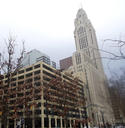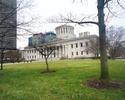Part 1: Innovation and “the Next Silicon Valley”
It’s mayoral season in Cleveland and a number of viable candidates are lining up. With political candidacies inevitably comes political agendas. We will hear a lot about what a given candidate thinks has or hasn’t worked in Cleveland. We will also hear prognosticating about the future of Cleveland. read more »






















